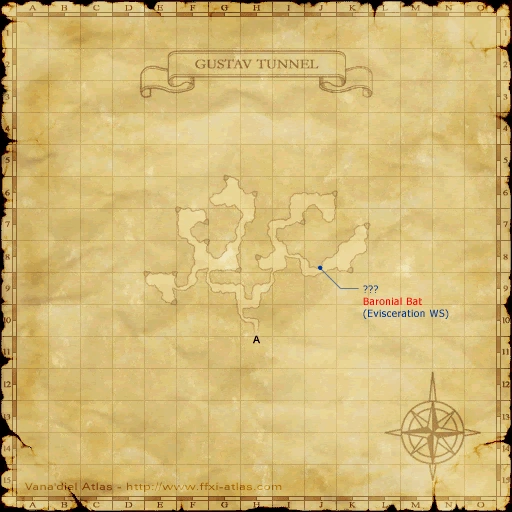Ungur
| This article is missing a picture of the monster, NM, or pet. You can help by adding it. |
| Zone | Level | Drops | Steal | Spawns | Notes |
|---|---|---|---|---|---|
|
80-82 |
1 |
A | |||
|
HP = Detects Low HP; M = Detects Magic; Sc = Follows by Scent; T(S) = True-sight; T(H) = True-hearing JA = Detects job abilities; WS = Detects weaponskills; Z(D) = Asleep in Daytime; Z(N) = Asleep at Nighttime; A(R) = Aggressive to Reive participants | |||||
Notes:
 Confirmed: Lottery spawn with window opening 2 hours after last kill.
Confirmed: Lottery spawn with window opening 2 hours after last kill. Lottery Spawn from a Typhoon Wyvern (placeholder decimal/hex: 17645754/0BA) around J-6 on the second map (this is different from retail). This is the only location the placeholder will spawn. Placeholder respawns about every 16 minutes.
Lottery Spawn from a Typhoon Wyvern (placeholder decimal/hex: 17645754/0BA) around J-6 on the second map (this is different from retail). This is the only location the placeholder will spawn. Placeholder respawns about every 16 minutes.- Ungur will only spawn at E-9. There is a 15% chance Ungur will spawn everytime you kill the placeholder (not additive).
- Reports that Ungur may spawn at G-6.
- Killable by: 6 level 70 characters with Ninja tank or Lv75 THF or NIN with a RDM or WHM and BRD very carefully. Recommended to have 2 Ninjas or a Thief and Ninja plus a few mages (preferably a whm and rdm) to ensure victory as 1 tank can be difficult due to heavy dmg from tp attacks (Fang Rush will kill a ninja or thief at full life with no shadows up and Radient Breath does around 700+ dmg).
- Drops ~1,500 Gil.
Historical Background
In Australian Aboriginal mythology (specifically from the Kimberly region of Australia), Ungur (also called Ungud or Galeru [the name of an elephant-like enemy in FFV]) was a wondjiina (primal beings of the Altjira [local name for The Dreamtime]) known more commonly as the Rainbow Snake/Rainbow Serpent. The Rainbow Serpent was one of the most important figures in Aboriginal mythology. It resided in the permanent waterholes of the Outback and was considered to be the source of replenishment for the water. The gullies and channels across the desert were believed to be made by him as it slithered across the desert plains, allowing for water to flow from place to place. It is considered both benevolent and malevolent, protecting the people from other Aboriginal tribes as well as punishing anyone who violated the sacred laws.

